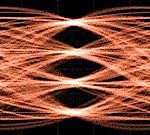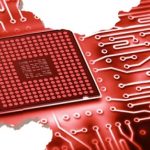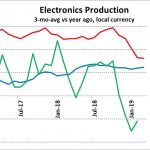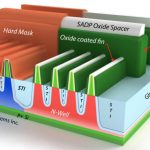eSilicon was one of the first companies to focus on making the benefits of the fabless semiconductor movement available to a broader range of customers and markets. The company is credited with the creation of the fabless ASIC model. In this section, eSilicon shares some of its history and provides its view of the ever-changing … Read More
Opening a new front in multi faceted trade war
Selecting an ASIC Package
Semiconductor chip package technologies have evolved throughout the years to the point where hundreds of package types are available today.
Most applications will require the more general, single-element packaging for integrated circuits and the other components such as resistors, capacitators, antenna etc. However,… Read More
Semiconductor IP Security Issues
Every morning I read the headlines from SemiWiki, CNN, LinkedIn and my Twitter feed, and it seems like every week that I read about another security breach that makes me wonder if anything online is secure. Companies try to harden their web sites, IT infrastructure and even their electronic products from being exploited or tampered… Read More
Monday DAC IP Session “PAM 4 Enable 112G SerDes”
This session will open the DAC IP Track at 10:30 on Monday “How PAM4 and DSP Enable 112G SerDes Design” in Room N264. I am very proud to chair this invited paper session, as it addresses one of the key pieces of design, enabling to exchange data flow at the highest possible data rate. It can be between two chips on the same board, we talk … Read More
400G Ethernet test chip tapes-out at 7nm from eSilicon
Since the beginning of May eSilicon has announced the tape-out of three TSMC 7nm test chips. The first of these, a 7nm 400G Ethernet Gearbox/Retimer design, caught my eye and I followed up with Hugh Durdan, their vice president of strategy and products, to learn more about it. Rather than just respin their 56G SerDes, they decided… Read More
Chips are the bleeding edge of China trade war Recovery
Last week we warned of a further down leg due to China trade. We were surprised how quickly our prediction came true as it appears we are now in the midst of giving back all the upside built in to stocks based on a peaceful resolution of the trade conflict which obviously isn’t happening.
Many of the semi stocks we cover were down… Read More
Trade war shifts electronics production
The U.S. is showing steady growth in electronics production. Three-month-average change versus a year ago (3/12) in March 2019 was 6.2%, the 12[SUP]th[/SUP] consecutive month of growth above 5%. China electronics production is decelerating, with March 2019 3/12 growth of 8.2%, similar to 8.3% in February. This marks the first… Read More
Chip Equip Trade War Collateral Damage
We have been very vocal and perhaps the first to warn of the risks to the semiconductor and semiconductor equipment industry from the China trade war with the US. It seems that the war is now fully upon us with the imposition of 25% tariffs by the US and promised retribution by China. The semiconductor industry is at the leading edge … Read More
The Evolution of the Extension Implant Part V
Part 4 of this series discussed how a transistor Extension could be fabricated in a planar device without using an implant operation, and is instead formed using a preferential etch followed by a selective epitaxial deposition. This final installment of the series will present the formation of an Extension in a FinFET transistor… Read More











The Quantum Threat: Why Industrial Control Systems Must Be Ready and How PQShield Is Leading the Defense